Momentum Flow
An adaptive business model that shifts organizations incrementally versus painful disruption.
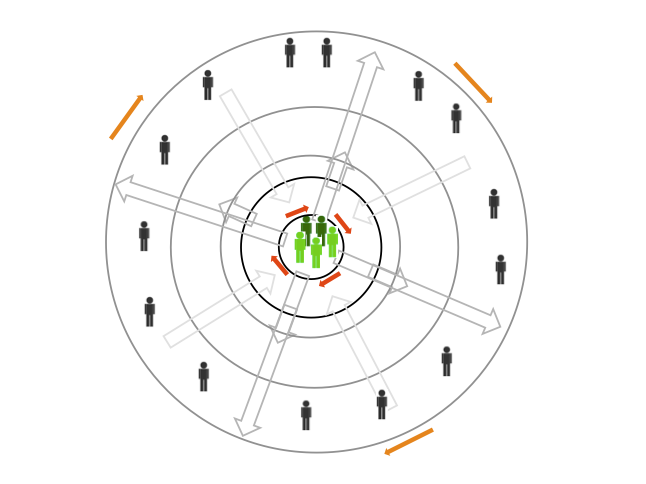
To be competitive within our current and future business environments, organizations need to build internal team models that succeed by “going with the flow.” This is not a passive act, it’s the building of a system that harnesses the power of disruption and innovation. Disruption is a continuum; this model creates a method to mitigate disruption by working within it.
I drafted and implemented this model during my two years working on social and digital programs at the PR agency, Waggener Edstrom. This idea is not original; it’s a modification to existing models on team management. Plus, this model couldn’t be accomplished without the input of the clients I assisted at the time. This model was successful for my team in our pursuit of assisting current clients, attracting new clients, and transforming the all-up agency to become more facile in bringing our clients into new opportunities.
The best metaphor for this model is a gyroscope. The core team “spins,” producing iterative and creative work that then moves the entire organization in the direction of momentum.
How it works:
The Framework for this operation is illustrated as concentric circles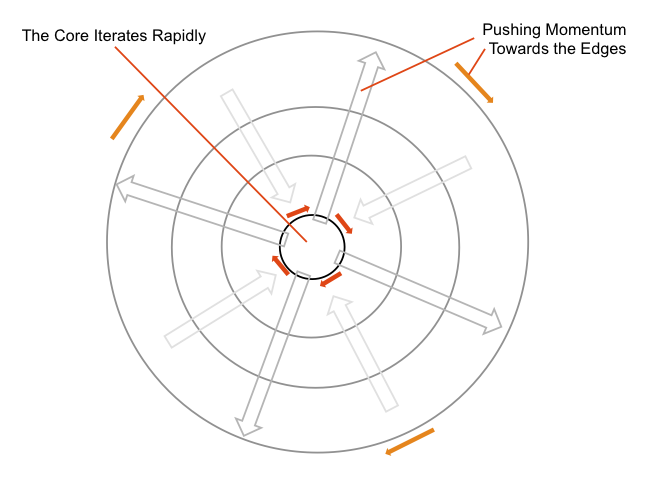
- People and their skillsets move towards the middle
- People and their new experiences move out towards the edges
- The core team produces deliverables, for clients and the organization that incrementally educates all stakeholders on new learnings.
“Leads” are identified from across the organization to manage a project, team or initiative.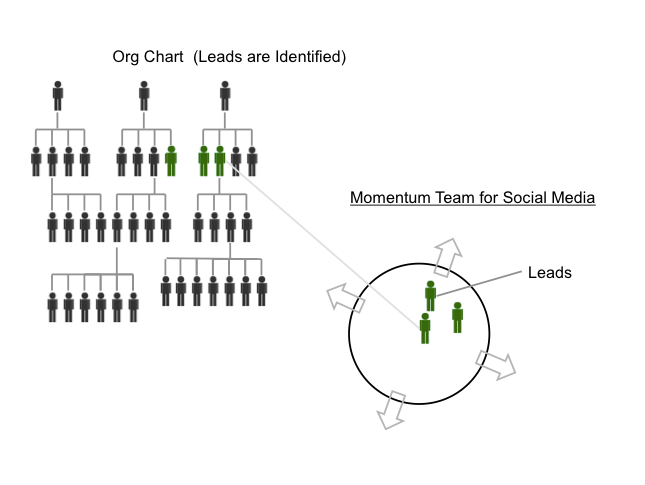
As example, At Waggener, our initiative was to increase the social media offerings for clients. Leads with Social Media experience were identified to lead the team.
“Seats,” the people who make up the team, are then identified from across the entire organization.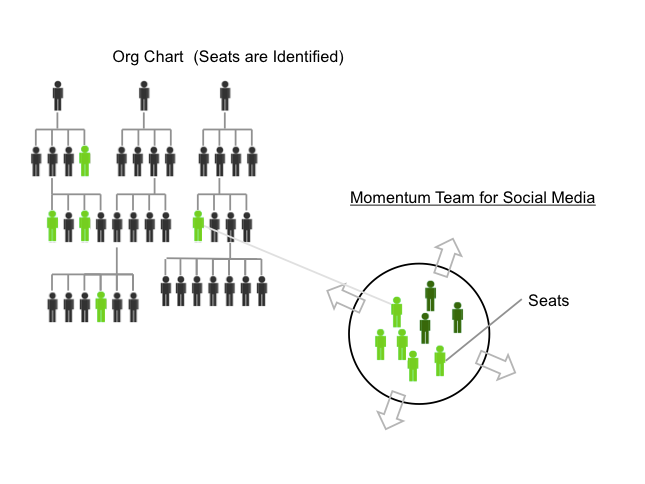
These Seats do not have to have specific topical experience within the goals of the project, but should have strong relevant skillsets. An example make-up of the core team would include some experts, some intermediate experience, and some novices on the topic, but would include complimentary skillsets:
- Project Management
- Creative & Design
- Client Engagement
- Analysis & Research
- Marketing & Sales
- Branding

“Seats” are “temporary” positions, lasting between six months and two years. The tenure of the Seat is based upon:
- Time-availability of the individual to join a core team
- The desire for the individual to learn new skills
- The expected length of the project
Once tenure on a core team is completed, the Seat is then assigned to a new team and/or returns to their previous position (such as back on the sales team).
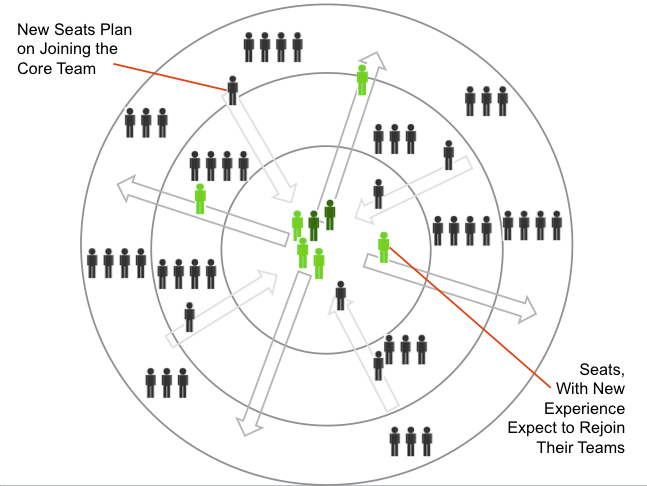
***A key aspect of the success of this model is the new understanding of the role of an “employee.” Within this model, an employee learns to adapt to the new business environment of innovation and change with low pain and low anxiety. Rather than being anxious about skillset and current “static” roles (such as being hired for one specific career path), this model shifts the workforce towards “dynamism.” In the new era, employees will need to be flexible and expect disruptive change as part of ones career. This model builds anti-disruptive flexibility into the organization. Employees gain the skill-sets for success within disruption by working within an organization that is build to harness the power of disruption. In tandem, this creates a flexible, agile business organization that is “always in motion” and “always on their toes” versus “back on their heels.”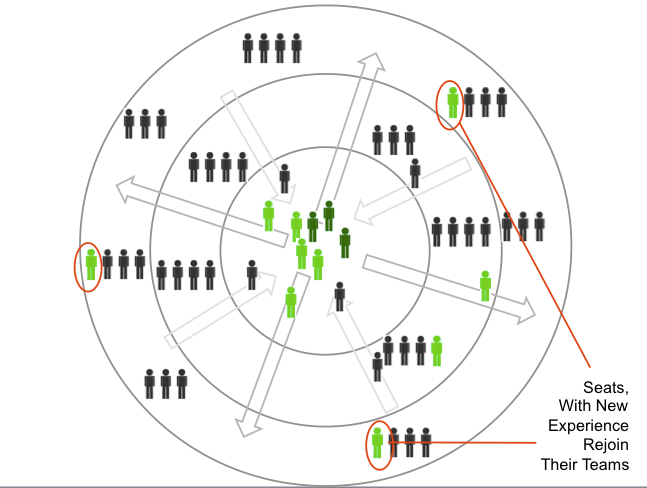
Leads will remain with the core team as long as that function is needed. In some cases the Leads will go on to lead other core teams or take new positions within the organization.
As example, at Waggener, the Leads were semi-permanent as bringing social to the organization was a long-term process. Our approach was to rotate the core team lead at least once per year. This way the Leads remained on the core team, but each had an expected time when they would set the agenda for the team. In the ideal situation, over time, the entire organization will adopt this agile team model, becoming an organization build of agile teams. Start-ups, such as Spotify, are built this way (http://techcrunch.com/2012/11/17/heres-how-spotify-scales-up-and-stays-agile-it-runs-squads-like-lean-startups/).
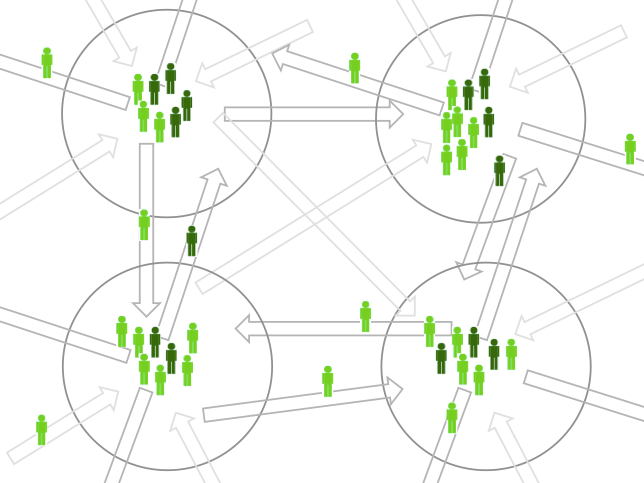
However, most organizations can’t shift that quickly. Therefore, the near-term value of using this model is:
- Individuals increase their skillsets and value to the organization through experience versus “training”
- Individuals gain closer working ties across teams, leading to greater efficiencies and innovation through shared experience
- Clients gain a greater wealth of value from their relationship with the agency
- The organization increases the potential value of each individual by providing new platforms for their success
- The organization establishes and gains a model to incrementally address change (and potentially crisis)
The Successes
When this model is put into place it creates an incremental organizational shift in thinking. It fosters a new way to approach opportunities while mitigating the pain of our disruptive business era. This model “learns-up” staff in a meaningful way via experience and collaboration versus “trainings.”
Ultimately this creates better, higher-value work for clients & customers. And that’s the end-goal of any organization.
—-
This looks fascinating. Sadly, I have to print it out to review in more depth. I’ll post a comment as soon as I review completely. I hope you are well.
NSN